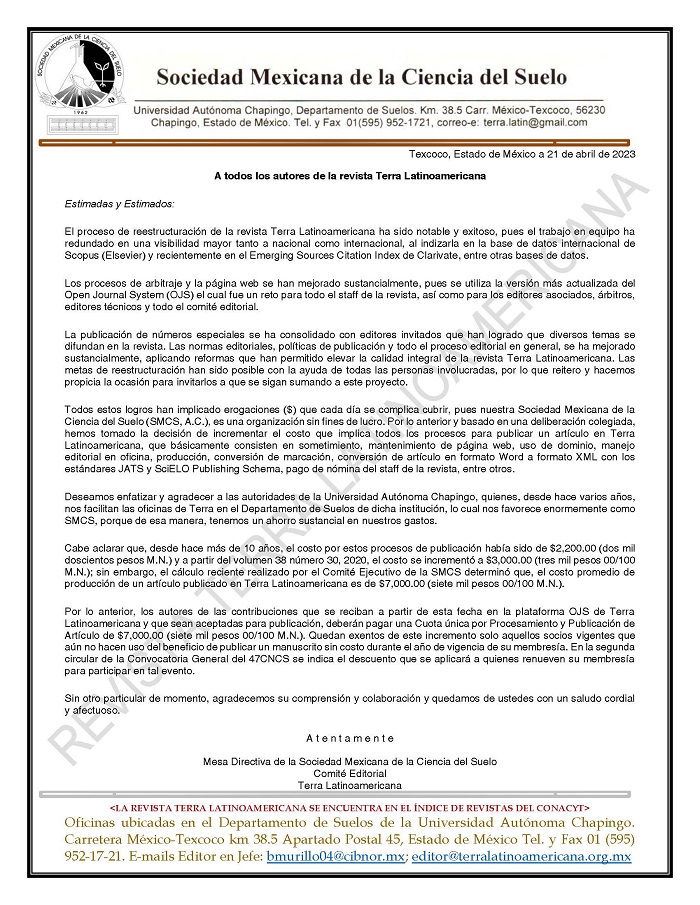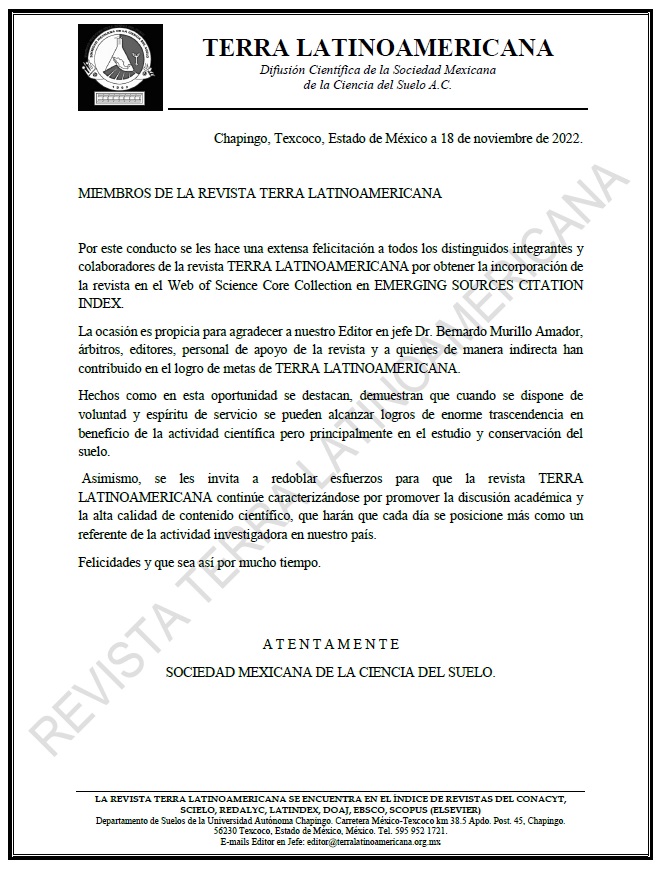In vitro Propagation of Cof fea arabica var. Borbon Plants Obtained by Chemical Mutagenesis
DOI:
https://doi.org/10.28940/terralatinoamericana.v43i.2000Keywords:
micropropagation, morphogenesis, EMS, mutants, rhizogenesisAbstract
Cof fea arabica is a species of economic interest in various countries, with Mexico standing out as one of the main exporters. However, there are several pests and diseases, such as cof fee leaf rust, that reduce the production of cof fee fields, af fecting the economy of the producers. Therefore, research on genetic improvement and the propagation of this species has increased in recent years. Among the genetic improvement techniques, mutagenesis stands out. However, mutant plants may exhibit insensitivity to hormonal stimuli. For this reason, the research evaluated the ef fect of dif ferent growth regulators on the morphogenic response of mutant plants obtained through chemical mutagenesis using ethyl methanesulfonate (EMS) during in vitro propagation processes. During the propagation stage, no dif ference
was observed in the response of mutagenized and non-mutagenized plants, with the
highest shoot production (5.1) occurring with 6 mg L-1 of 6-Benzylaminopurine (BAP). In the in vitro rhizogenesis stage, dif ferences were observed in the morphological response of root formation in mutant plants, with the combination of 3 mg L-1 of naphthaleneacetic acid and 3 mg L-1 of indolebutyric acid resulting in the highest root formation (83%).
Downloads
Publication Facts
Reviewer profiles N/A
Author statements
- Academic society
- Terra Latinoamericana
- Publisher
- Mexican Society of Soil Science, C.A.

















